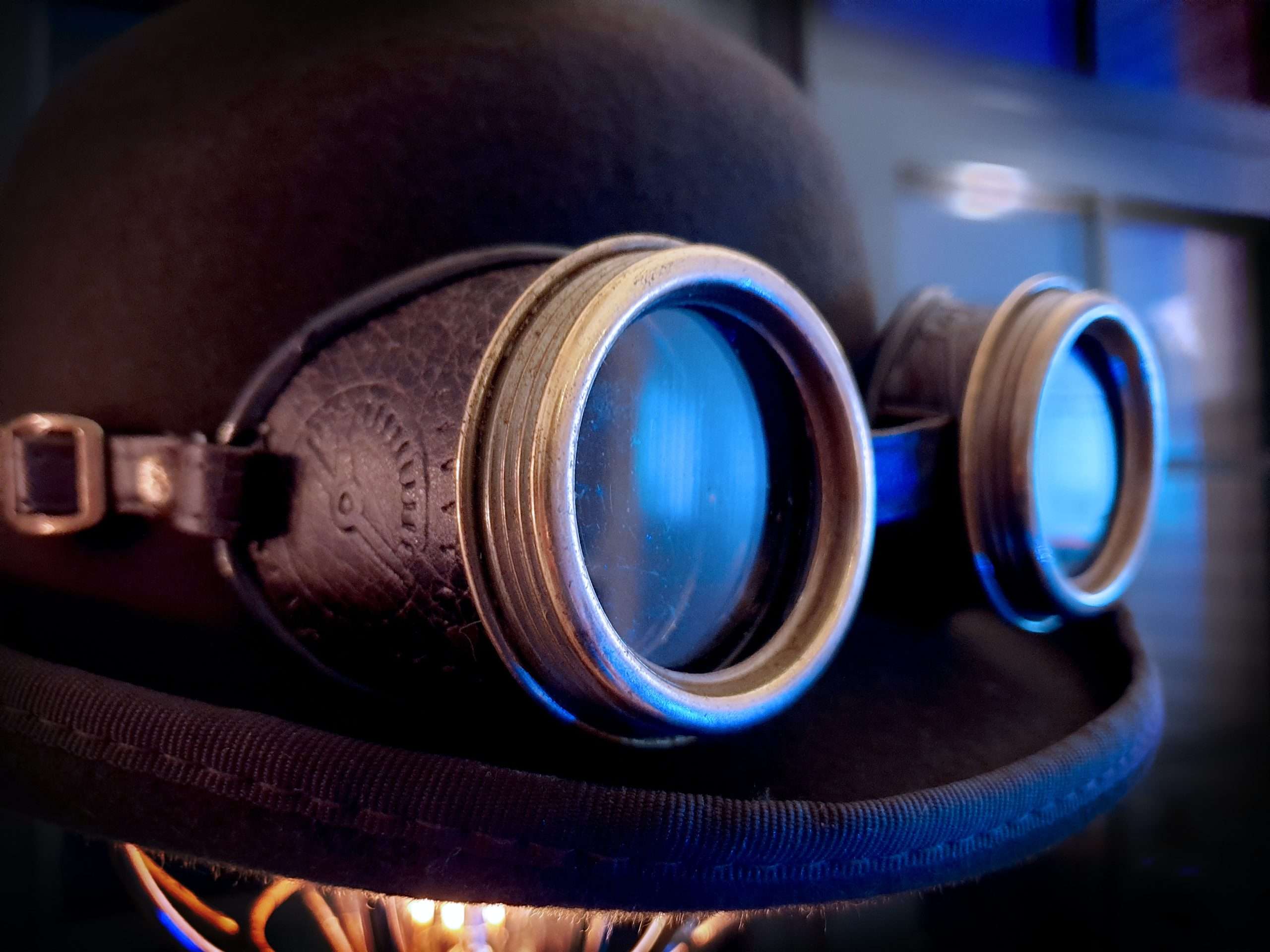We’ve had some issues with emails going to hotmail, outlook and related addresses. If you’ve recently made a purchase using one of these and not received a confirmation email, please get in contact with us – use an alterative email address for contact or purchase if you can.

For all things fantasy, horror, and speculative fiction
Announcement:

Subgenre deep dive: Steampunk
In this first of a new regular column, Tiffani Angus—co-author of Spec Fic for Newbies—takes us on a dive into the world of Steampunk.
Genre definitions and designations can be both helpful and somewhat harmful to writers. They help because they give us training wheels when writing and reading; we know what we like, it has this label, and we can find—or write—more of it. Despite these being marketing labels, genres can come with their own “rules” and guidelines. The problem, however, is when the “rules” get twisted and are used to gatekeep, limit, and exclude. Enter: subgenres. While bookshops and some libraries organise books by genre (Romance, Crime, Science Fiction, etc.), nobody organises by subgenre, and that’s where the fun starts.
Subgenres, in some cases, do have their own sets of guidelines, but these are based on the context they sit in, the primordial genre soup they grew out of, and the expectations that readers have built over time (and that have changed and will change over time). Are there walls, though? Not really. The fun thing about subgenres is that they’re wiggly, with the spaces between them about as rigid as Nickelodeon green slime. That isn’t to say that diving in with no real understanding of what a subgenre is, and why it is, is always the way to go. I’m here to give you some insight into various subgenres of fantasy and horror (and occasionally science fiction, when they cross over because they definitely do!) so that as you go out into the big writing (and reading) world you have some insight into where these subgenres come from and know where you’re stepping into the “conversation” of SFF/H.

The subgenres I’ll be exploring here will be ones that Val Nolan and I covered in our guide Spec Fic for Newbies: A Beginner’s Guide to Writing Subgenres of Science Fiction, Fantasy, and Horror (Luna Press, 2023), as well as ones we are covering in the upcoming volume 2 (and possibly volume 3!) of the same. I’ll provide a bit of history about where it came from and where it is now along with a recommended reading (and viewing) guide. For more, including activities, check out the original source: Spec Fic for Newbies.
Get £3 off Spec Fic For Newbies when you buy directly from Luna Press using the promo code “SFN1”.
This month’s subgenre is… Steampunk

This month is a look at STEAMPUNK. I’ve chosen this one because it’s gone through a lot of changes and evolution from its early days, and because (unfortunately) too often today if someone clamps a copper gear onto a story it gets labelled steampunk.
There’s so much more that’s waiting to be unpacked and played with, though.
Steampunk is science fiction and historical fantasy mashed together. It takes the idea of the world having scientific advancements earlier than they really existed and runs with it, setting stories (most often) in our nineteenth-century primary Western world with steam technology doing things it didn’t do, such as power flying machines that had the capacity to carry passengers and cargo long before the Wright brothers flew their first rather rickety plane in 1904. Steampunk takes the speculative further by introducing fantasy elements, such as supernatural events. For example, in some stories, inventors harness the “aether” from the air to power flying ships, while in other stories vampires are an acknowledged part of society, or clockwork automatons are much more robust and complex than they ever were in our primary world and seemingly run on magic. So, while Steampunk is SF in its use of technology that’s advanced for its time, it’s also Fantasy with its imagined past and magical elements.
But why is it called Steampunk? Well, we have a habit of slapping a -punk suffix onto words to make them mean something more than just rock or cyber or splatter or, in this case, steam. Originally, steampunk was harder. It was more, well, punk than it’s become. (Not that current steampunk isn’t cool and fun! It’s just different.) Steampunk had something to say about society in the late 1970s, when it first developed, through to ’90s and early 2000s, when it was at the height of its popularity. The early SFF of the nineteenth century that included Jules Verne’s 20,000 Leagues Under the Sea (1872) and H.G. Wells’s The Time Machine (1895) featured amazing inventions and their adventurous creators.
(photo by Kevin Sicher on Unsplash)

The stories are set in places far-flung from the “norm” such as in the air, under the sea, in the American (wild) West, and even on other planets, featuring (usually) white men having adventures that, as explained by author Jess Nevins in the introduction to the VanderMeer-edited collection Steampunk, often supported “exploitative capitalism” (2008, p. 8). This isn’t a huge surprise when you consider the adventure literature of the time.
In 1987, author K.W. Jeter coined the term “steampunk” as a label for the stories told mainly by American authors setting their work in Victorian England, which was, for these authors, a place and time that was “an excellent mirror for the modern period”, and steampunk used its trappings—“the social, economic, and political structures of the Victorian era”—to comment on their own, which were arguably “essentially the same” (Nevins, p. 9). Hence steampunk.
In the past couple of decades, however, steampunk has lost some of its social commentary and turned towards being more of an aesthetic entity.

Critics have even called this “second generation steampunk”, “steam sci-fi” or even “gaslight romance” because of its loss of bite (Nevins, p. 10). A lot of current steampunk is full of the motifs and tropes—elaborate Victorian clothing (corsets, bustles, parasols, top hats, etc.), ray guns, copper gears, octopi symbols, vampires, werewolves, zeppelins, and on and on—that make it look amazing, but the stories themselves are sometimes just an amalgam of these images and not much else beyond an adventurous plot.
(Photo by Noel Nichols on Unsplash)
The subgenre has arguably lost some of the edge that a movement requires to earn the -punk moniker. Consider The Difference Engine (1990) by William Gibson and Bruce Sterling, which comments on unchecked technological progress and the dystopia it can create. Thirty years later we’re staring down the barrel of AI scraping whole generations’ worth of creatives’ work; it’s expected that cyberpunk would be the place to find commentary on this current issue, but could steampunk become punk once again?
Steampunk is mainly set during the height of the British Empire, and that’s also where it has lost some of its sharpness. The technology that existed depended on large amounts of resources—steel, rubber, etc.—that often came from countries colonised and ruled by Britain, with the materials mined or grown by people who were either enslaved or exploited and paid very little. The effects of colonisation and empire are still being felt over a century later in a world of fast fashion, cell phones, and electric vehicles built from resources found far from Britain (and other parts of the West) by an exploited workforce. Steampunk provides writers the opportunity to examine the world in the late nineteenth century from the point of view of those who have been deprived of an historical voice to tell their story: those on the other side of empire-building and colonialism. So, ask yourself what you might want to say about our world today through the lens of those issues in the nineteenth century, via Steampunk and its fun tropes and motifs.

Some Recommended Reading
- K.W. Jeter’s Morlock Night (1979; the morlocks from Wells’s The Time Machine time travel to Victorian London)
- Tim Powers’s The Anubis Gates (1983; time travel, magicians, and werewolves)
- James P. Blaylock’s Homunculus (1986; dirigibles, aliens, and corpse reanimation)
- William Gibson’s and Bruce Sterling’s The Difference Engine (1990; alternate history of nineteenth-century Britain (and the world) due to the invention of an early computer in the 1830s)
- Cherie Priest’s Boneshaker (2009; airships, amazing machines, and zombies)
- Gail Carriger with her Parasol Protectorate series (2009-’12; comedy of manners, vampires, werewolves, airships, etc.); the first book is Soulless
- Natasha Pulley’s The Watchmaker of Filigree Street (2016; “ether”, seemingly magical clockwork machines)
Meet the author

Tiffani Angus (PhD), a BSFA- and BFS-award finalist for her debut novel Threading the Labyrinth, is also an ex-academic and the co-director of the Underhill Academy for SFF Writers. Her latest non-fiction book, co-written with academic and author Val Nolan and out with Luna Press, is Spec Fic for Newbies: A Beginner’s Guide to Writing Subgenres of Science Fiction, Fantasy, and Horror. She lives in Bury St Edmunds and is currently at work on Spec Fic Vol 2, a novel, a novella, a short story collection, and another scandalous new project.